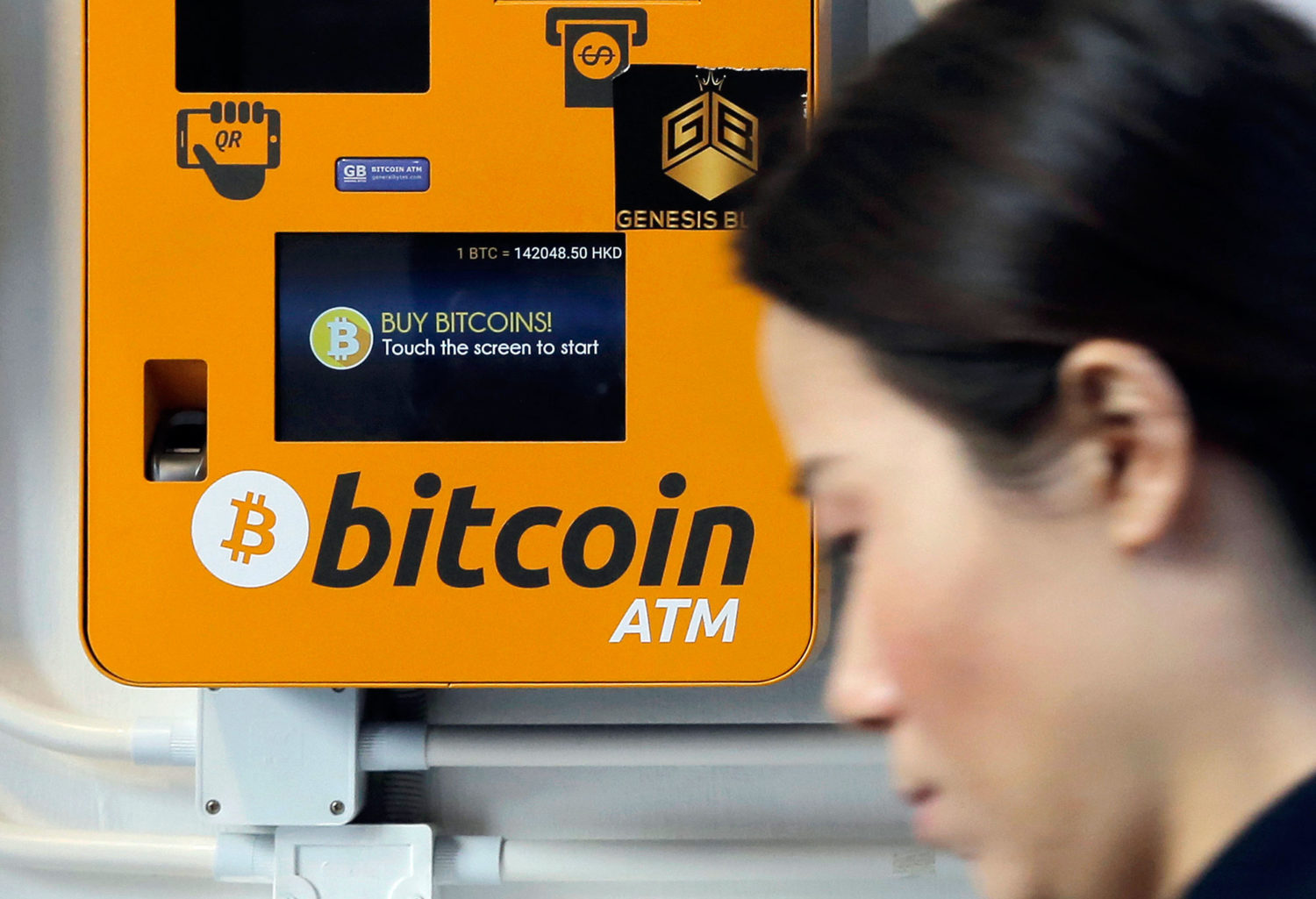Introduction
Welcome to the world of Bitcoin, a revolutionary digital currency that has taken the world by storm. In this article, we will delve into what Bitcoin is, how it works, and the various aspects that make up this fascinating cryptocurrency.
Bitcoin, created in 2009 by an anonymous person or group of people using the pseudonym Satoshi Nakamoto, was the first decentralized cryptocurrency. It quickly gained popularity due to its ability to enable secure and anonymous online transactions without the need for intermediaries, such as banks or governments.
Over the years, Bitcoin has become a household name, capturing the attention of investors, traders, and technology enthusiasts alike. Its volatile nature, potential for high returns, and the underlying blockchain technology have made it a subject of endless discussions and debates.
But what exactly is a Bitcoin?
A Bitcoin is a digital currency, represented by a unique code stored and transferred electronically. Unlike traditional currencies such as the US dollar or Euro, it exists solely in the digital realm, with no physical form, like a coin or a banknote. This means that it cannot be held or touched but can still be bought, sold, and used for transactions on various online platforms.
Some people may wonder how a digital currency can hold any value. The value of Bitcoin is determined by supply and demand, much like any other currency. As more people recognize its potential and seek to acquire it, the demand increases, driving up its value. Conversely, if people start selling off their Bitcoin, the supply increases, causing the value to drop.
Bitcoin is built on a decentralized network known as the blockchain, which we will explore in more detail later in this article. The blockchain acts as a public ledger that records all transactions made with Bitcoin, ensuring transparency and security.
Bitcoin has also gained a reputation for its decentralized and transparent nature. With no central authority governing it, Bitcoin allows users to have full control over their funds, eliminating the need to rely on financial institutions. This has made it a popular choice for those who value privacy, security, and autonomy.
In the following sections, we will delve deeper into the history of Bitcoin, its digital representation, cryptographic characteristics, the technology behind it, and how it is mined, stored, and secured. By the end of this article, you will have a comprehensive understanding of what a Bitcoin is and how it fits into the ever-evolving world of digital finance.
History of Bitcoin
The roots of Bitcoin can be traced back to a whitepaper published in October 2008 by the mysterious figure known as Satoshi Nakamoto. The whitepaper, titled “Bitcoin: A Peer-to-Peer Electronic Cash System,” outlined the concept of a decentralized digital currency that could operate without the need for a central authority.
In January 2009, Nakamoto mined the first block of the Bitcoin blockchain, known as the “genesis block.” This marked the birth of Bitcoin and the beginning of a new era in finance and technology.
Initially, Bitcoin garnered little attention, and its value remained low. Early adopters were drawn to its potential to disrupt the traditional financial system and enable secure, fast, and low-cost transactions. As the years went by, Bitcoin started to gain traction, with more individuals and businesses showing interest in this innovative form of currency.
In 2010, the first real-world transaction using Bitcoin occurred when Laszlo Hanyecz famously bought two pizzas for 10,000 Bitcoins. This transaction marked the first known commercial use of Bitcoin and highlighted its potential as a medium of exchange.
Throughout the years, Bitcoin faced several significant milestones and challenges. In 2011, it gained mainstream attention after being featured in various media outlets, which led to a surge in its popularity and value.
In 2013, Bitcoin experienced a significant price rally, reaching an all-time high of over $1,000 per Bitcoin. This sparked a wave of interest and investment in cryptocurrency, with individuals and institutions entering the market.
However, Bitcoin’s journey has not been without its hurdles. It has faced criticism, legal challenges, and market volatility. Nonetheless, Bitcoin has persevered and continued to evolve.
In recent years, Bitcoin has gained wider acceptance as a legitimate form of currency. Major companies and institutions have started to embrace it, and some regulators have created frameworks to govern its use.
Bitcoin’s history is a testament to the power of innovation and the potential for disruptive technologies to revolutionize traditional systems. As it continues to grow and evolve, Bitcoin remains at the forefront of the digital finance revolution, constantly pushing boundaries and challenging the status quo.
In the next section, we will explore what exactly a Bitcoin is and how it is represented in the digital realm.
What Exactly is a Bitcoin?
To understand what a Bitcoin is, we need to break it down into its fundamental components. At its core, a Bitcoin is a digital currency that exists solely in the digital realm. It is represented by a unique code and operates on a decentralized network known as the blockchain.
Unlike traditional currencies issued by central banks, Bitcoins are not physical objects like coins or banknotes. Instead, they are purely digital and can be bought, sold, and used for transactions exclusively online.
Each Bitcoin is represented by a unique alphanumeric code, which serves as its digital signature. This code is stored in a digital wallet, which functions as a secure container for holding and managing Bitcoins.
The value of a Bitcoin is determined by supply and demand in the market. Just like any other currency, as more people seek to acquire Bitcoins, the demand increases, driving up its value. Conversely, if people start selling off their Bitcoins, the supply increases, causing the value to drop.
Bitcoin transactions are recorded on a public ledger called the blockchain. This ledger is maintained by a network of computers, known as nodes, which verify and validate each transaction. By using cryptographic protocols, the blockchain ensures the security and integrity of the Bitcoin network, making it difficult for anyone to manipulate or counterfeit transactions.
One unique characteristic of Bitcoin is its limited supply. There will only ever be 21 million Bitcoins in existence, and this scarcity contributes to its value. As more Bitcoins are mined and enter circulation, the rate at which they are created decreases over time.
Bitcoin is divisible, which means that it can be broken down into smaller units. The smallest unit of a Bitcoin is called a satoshi, named after its mysterious creator, Satoshi Nakamoto. One Bitcoin is equivalent to 100 million satoshis, allowing for microtransactions and flexibility in the use of the currency.
Bitcoin operates independently of any government or financial institution, making it a decentralized currency. This decentralization gives users control over their funds, as they are not beholden to the rules and regulations imposed by traditional financial systems.
In the next section, we will explore the digital representation of a Bitcoin and the cryptographic characteristics that make it secure and reliable.
Digital Representation
A Bitcoin is represented in the digital realm through a unique alphanumeric code. This code serves as a digital signature that identifies and distinguishes each Bitcoin from others. It is this code that is used in transactions, allowing for the transfer of ownership from one party to another.
To interact with Bitcoin, users need a digital wallet. A digital wallet is a software application or a physical device that securely stores the user’s Bitcoin and facilitates transactions. When a user receives Bitcoins, they are sent to a unique address associated with their wallet, which is generated using cryptographic algorithms.
These addresses, consisting of a long string of characters, act as the recipient’s public key – a form of their digital identity. Anyone can send Bitcoins to this address, but only the owner of the private key associated with the address can access and spend those Bitcoins.
Private keys are generated within the user’s digital wallet and should be kept confidential. They are used to sign transactions and prove ownership of the Bitcoin. Losing or compromising the private key can result in the permanent loss of access to the associated Bitcoins.
In addition to the private key, a digital signature is generated for each transaction to ensure its authenticity and integrity. This process involves creating a unique hash of the transaction data and encrypting it using the private key. The digital signature can be verified using the corresponding public key.
The use of cryptographic techniques ensures the security and privacy of Bitcoin transactions. It makes it virtually impossible for unauthorized parties to tamper with the transaction data or forge signatures, providing users with confidence in the integrity of the Bitcoin network.
It is worth noting that while Bitcoin transactions are recorded on the public blockchain ledger, the identities of the parties involved in the transactions are kept anonymous. Instead of using real names, pseudonyms or addresses are often used to preserve privacy.
Bitcoin’s digital representation allows for fast, secure, and global transactions. It eliminates the need for intermediaries, such as banks, that impose fees and delays in traditional financial systems. Additionally, the digital nature of Bitcoin enables seamless integration with online platforms and services, making it more convenient for users.
In the next section, we will explore the cryptographic characteristics that make Bitcoin secure and reliable.
Cryptographic Characteristics
The cryptographic characteristics of Bitcoin play a vital role in ensuring the security, integrity, and authenticity of the cryptocurrency. By harnessing various cryptographic techniques, Bitcoin provides a tamper-proof and trustworthy system for digital transactions.
One of the key cryptographic features of Bitcoin is hash functions. A hash function is a mathematical algorithm that takes input data and produces a fixed-size string of characters. In the case of Bitcoin, these hash functions are used to create unique identifiers for transactions and blocks on the blockchain.
Hash functions in Bitcoin are designed to be one-way and irreversible. This means that it is easy to compute the hash value of a given input, but virtually impossible to recreate the original input from its hash. This property helps ensure the integrity of transactions and blocks on the Bitcoin blockchain.
Another cryptographic characteristic used in Bitcoin is public-key cryptography. Public-key cryptography involves the use of a public key and a private key, which are mathematically linked. The public key is used to encrypt data, while the private key is used to decrypt it.
In the context of Bitcoin, public-key cryptography is utilized for two purposes. First, it is used to generate addresses, which act as the public key in transactions. Second, it is used to create digital signatures that verify the authenticity of transactions.
When a Bitcoin transaction is made, the sender uses their private key to digitally sign the transaction. This signature can be verified by anyone using the sender’s public key. If the signature is valid, it demonstrates that the transaction was indeed authorized by the private key holder.
The combination of hash functions and public-key cryptography ensures the security and integrity of Bitcoin transactions. It makes it virtually impossible for anyone to tamper with the transaction data or forge digital signatures without access to the private key.
Additionally, the decentralized nature of the Bitcoin network adds another layer of security. The blockchain, which serves as a public ledger, is maintained by a network of computers, known as nodes. Each node verifies and validates transactions, preventing any single entity from having control over the network.
Overall, these cryptographic characteristics make Bitcoin a robust and secure currency. They provide the foundation for secure transactions, immutability of the blockchain, and the protection of user funds.
In the next section, we will explore the technology behind Bitcoin and how it is implemented through the blockchain.
Blockchain Technology
At the heart of Bitcoin’s infrastructure lies blockchain technology, a decentralized and transparent system that enables the secure and immutable record-keeping of all Bitcoin transactions. The blockchain serves as a public ledger, storing a chronological sequence of blocks containing transactional data.
Essentially, the blockchain is a distributed database that is replicated across multiple nodes in the Bitcoin network. Each node maintains a copy of the entire blockchain and collaborates to validate and verify transactions.
When a transaction occurs, it is broadcasted to the network, and nodes begin the process of verifying its validity. This verification involves confirming that the sender has sufficient balance and ensuring that the transaction adheres to the rules set by the Bitcoin protocol.
Once a group of transactions has been verified, they are bundled together into a block. Each block contains a unique identifier, a timestamp, and a reference to the previous block, forming a chain-like structure. This linking of blocks is what gives the technology its name – blockchain.
One of the defining characteristics of the blockchain is its immutability. Once a block is added to the chain, it is extremely difficult to alter or remove its contents without the consensus of the majority of the network participants.
This immutability is achieved through the use of cryptographic hashing. Each block has a unique hash generated by applying a hash function to its data. Changing even a single character in the block’s data would result in a completely different hash. As each block includes the hash of the previous block, any modification to a block would require recalculating the hashes of all subsequent blocks, rendering the tampering evident to the network.
The decentralized nature of the blockchain ensures resilience and security. There is no single point of failure or vulnerability that can be exploited. Even if some nodes go offline or malicious actors attempt to manipulate the system, as long as a majority of nodes maintain the integrity of the network, the blockchain remains intact.
Decentralization also means that no central authority has control over the blockchain. This eliminates the need for intermediaries and allows for direct peer-to-peer transactions, bypassing traditional financial institutions and reducing associated costs and delays.
Furthermore, the transparency of the blockchain allows anyone to view and validate transactions. All transactions are open for public scrutiny, thereby enhancing trust and accountability in the system.
Overall, blockchain technology revolutionizes traditional record-keeping systems by providing a secure, decentralized, and transparent framework. Its application in Bitcoin has enabled the creation and maintenance of a reliable and efficient digital currency.
In the next section, we will explore the process of mining and its role in the Bitcoin ecosystem.
Mining for Bitcoin
Mining plays a crucial role in the functioning of the Bitcoin network. It is the process by which new Bitcoins are created and added to the blockchain, as well as the means through which transactions are validated and confirmed.
Bitcoin mining involves using specialized computer hardware to solve complex mathematical puzzles. Miners compete with each other to be the first to find the solution and earn the reward of newly minted Bitcoins. This process is essential for maintaining the integrity and security of the Bitcoin network.
When a miner successfully solves a mathematical puzzle, they create a new block of transactions and add it to the blockchain. This process is known as block mining. The miner’s solution, known as the proof-of-work, serves as a cryptographic proof that the miner has carried out the required computational effort.
To incentivize miners to participate and secure the network, a specific number of Bitcoins are awarded to the miner who successfully mines a new block. This reward serves as compensation for the miner’s investment in hardware, electricity, and time.
As the Bitcoin network is designed to have a limited supply of 21 million Bitcoins, the mining reward is halved approximately every four years in an event called the “halving.” This mechanism is put in place to control the rate at which new Bitcoins enter circulation, ensuring scarcity and value appreciation over time.
Mining also helps validate and confirm transactions on the Bitcoin network. When a transaction is made, it is included in a pool of unconfirmed transactions known as the mempool. Miners select a group of transactions from the mempool and include them in a new block that they are attempting to mine.
By including a transaction in a block and successfully mining it, miners verify the validity of the transaction and add it to the blockchain. Additionally, this process helps prevent double-spending, as transactions need to be confirmed by multiple miners before they are considered final.
Bitcoin mining, however, requires significant computational power and electricity. To increase their chances of successfully mining a block, miners often join mining pools, where they combine their resources and share the rewards among participants once a block is mined.
Over the years, Bitcoin mining has transitioned from being carried out on personal computers to specialized hardware called ASICs (Application-Specific Integrated Circuits). These devices are designed solely for the purpose of mining Bitcoins and offer significantly higher hash rates, increasing the likelihood of successfully mining a block.
While mining can be a lucrative endeavor, it is not without its challenges. The increasing difficulty of the mathematical puzzles, the cost of equipment and electricity, and the competition among miners make it a highly competitive and resource-intensive process. Nonetheless, mining remains essential to the operation and security of the Bitcoin network.
In the next section, we will explore the process of storing and securing Bitcoins.
Storing and Securing Bitcoin
When it comes to Bitcoin, storing and securing your digital currency is of utmost importance. As a decentralized and digital form of money, Bitcoins are vulnerable to hacking, theft, and loss if not properly protected.
There are several methods to store and secure Bitcoins, each with its own level of security and convenience.
One option is to store Bitcoins in a digital wallet. A digital wallet can be software-based, such as a mobile or desktop application, or a hardware device designed specifically for storing cryptocurrency. These wallets generate and store the private keys necessary to access and manage the Bitcoins.
Software wallets are convenient and easy to use, but they are susceptible to malware and hacking. It is vital to ensure that you download wallets from reputable sources and regularly update your software to protect against potential vulnerabilities.
Hardware wallets, on the other hand, are considered the most secure option. These devices store the private keys offline, providing an added layer of protection against online threats. Hardware wallets are typically immune to computer viruses and malware since the private keys never leave the device.
Another option for storing Bitcoins is through paper wallets. A paper wallet involves printing out the private and public keys on a physical piece of paper. This method offers an offline storage solution but requires caution and security measures to prevent loss or theft of the paper wallet.
Regardless of the storage method chosen, it is crucial to back up the private keys and keep them in a secure place. Losing access to the private keys means permanently losing access to the Bitcoins stored in the wallet.
In addition to storing Bitcoins securely, it is essential to practice proper security measures to protect against hacking and unauthorized access. This includes using strong, unique passwords for wallets, enabling two-factor authentication whenever possible, and keeping software and devices up to date with the latest security patches.
Furthermore, it is advisable to be cautious when disclosing Bitcoin addresses to ensure privacy and prevent potential scams. While Bitcoin transactions are recorded on the public blockchain, it is possible to maintain anonymity by using different addresses for each transaction and not associating them with identifiable personal information.
Lastly, for those holding significant amounts of Bitcoins or concerned about long-term security, there is the option of utilizing offline or cold storage solutions. This involves keeping the private keys offline on devices that are not connected to the internet, providing an extra layer of protection from online threats.
By implementing proper storage and security measures, Bitcoin holders can reduce the risk of theft, hacking, and unauthorized access to their digital assets.
In the next section, we will summarize the key points covered in this article and reflect on the significance of Bitcoin in the world of digital finance.
Conclusion
Bitcoin has emerged as a groundbreaking and transformative force in the world of digital finance. It has revolutionized how we perceive and use currency, challenging traditional banking systems and offering an alternative that is secure, transparent, and decentralized.
Throughout this article, we have explored the history of Bitcoin, its digital representation, the cryptographic characteristics that ensure its security, the underlying blockchain technology, the process of mining, and the importance of storing and securing Bitcoin.
Bitcoin’s decentralized nature allows for direct peer-to-peer transactions, eliminating the need for intermediaries and reducing costs and delays. It operates on a public ledger called the blockchain, ensuring transparency and immutability of transactions.
Mining plays a critical role in adding new Bitcoins to the blockchain and validating transactions. Miners invest in specialized hardware and compete to solve complex puzzles, which, in turn, strengthen the network’s security and integrity.
When it comes to storing and securing Bitcoin, individuals have several options, including digital wallets, hardware wallets, and paper wallets. It is essential to protect private keys and adopt security measures to safeguard against hacking and unauthorized access.
As Bitcoin continues to evolve, it faces ongoing challenges and opportunities. Regulatory frameworks are being developed to govern its use, and major financial institutions are exploring its potential. The very concept of digital currencies and blockchain technology has the potential to transform various sectors, including finance, supply chain management, and more.
Ultimately, the significance of Bitcoin lies in its ability to empower individuals, offer financial freedom, and revolutionize traditional systems. Its potential for secure and fast transactions, coupled with its transparent and decentralized nature, positions Bitcoin as a catalyst for change in the digital age.
Whether it will become a mainstream currency or continue to exist as a parallel financial system is uncertain. However, the impact Bitcoin has already made on the financial landscape is undeniable, and its journey is far from over.

























